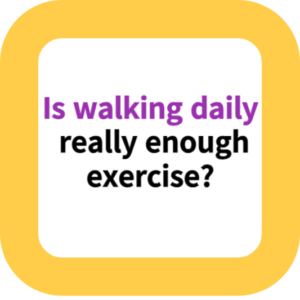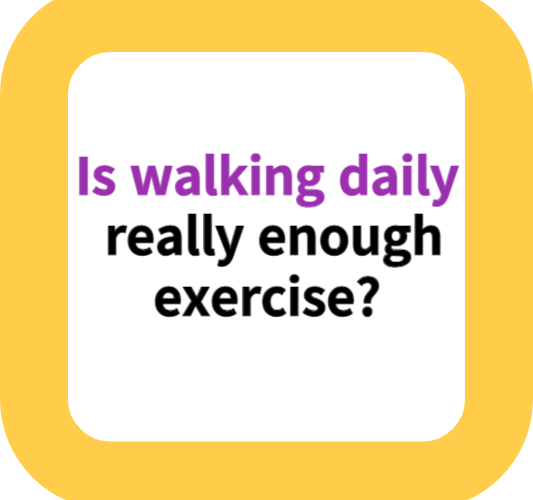Is walking daily really enough exercise?
Welcome to our fitness-focused blog where we dive deep into the world of exercise and well-being! In today’s feature, we’re tackling a question that resonates with many of us: “Is walking daily really enough exercise?”
This comprehensive guide takes you through the multi-faceted world of walking, examining its benefits, limitations, and how it fits into a holistic approach to health and fitness. From the lens of a physical therapist and backed by scientific insights, we explore whether a daily stroll is sufficient for maintaining and improving overall fitness.
We discuss the importance of varying your exercise routine, incorporating different intensities, and how walking can be a cornerstone in a well-rounded fitness regimen. Join us as we unravel the mystery and help you align your walking routine with your personal health goals, ensuring that every step you take is a step towards better health and well-being!
Is walking daily really enough exercise?

Introduction: Exploring the Sufficiency of Walking as Exercise
In a world where fitness trends constantly evolve, walking remains a timeless, accessible form of exercise. This comprehensive guide delves into the debate surrounding the efficacy of walking as a sole exercise regimen.
We aim to explore various facets of walking, assessing its role in maintaining and improving overall fitness and health.
Defining ‘Enough Exercise’
What exactly does “enough exercise” mean? The American Heart Association’s recommendation of at least 150 minutes of moderate-intensity or 75 minutes of vigorous aerobic activity weekly provides a baseline.
While a daily 30-minute walk meets the minimum criteria, the adequacy of this regimen varies based on individual fitness goals and health needs.
The Undeniable Benefits of Walking
Walking, a low-impact and accessible form of exercise, offers an array of health benefits. It enhances cardiovascular health, improves balance and coordination, and serves as a mental oasis, effectively reducing stress and elevating mood. Despite its simplicity, walking can be a cornerstone in maintaining a healthy lifestyle.
Embracing Variety in Exercise
The human body thrives on variety. Engaging in the same exercise routine, such as daily walking, can lead to stagnation and boredom. Incorporating diverse workouts like strength training, high-intensity interval exercises, or other cardio forms can accelerate progress in strength, endurance, and overall fitness levels.
The Role of Intensity in Exercise
Intensity plays a pivotal role in the effectiveness of any workout. For some, walking can be a moderate-intensity exercise, but for others, it may fall short in elevating the heart rate to a beneficial level. Adjusting the intensity to match personal fitness objectives is crucial, as is listening to your body’s cues and limitations.
A Physical Therapist’s Insight
According to a physical therapist, many patients who rely solely on walking have been observed to struggle with issues such as chronic pain or weight management. While walking is beneficial, it may not comprehensively address specific health concerns. A balanced exercise routine incorporating strength training, flexibility exercises, and more can yield significant health improvements.
Crafting a Comprehensive Fitness Plan
Consider exercise as a toolkit for building health and fitness. Just like a variety of tools is needed for construction, a blend of different exercises is essential for a well-rounded fitness regimen. Walking is a valuable tool, but it should be complemented with other forms of exercise for a holistic approach to fitness.
Integrating Walking into a Diverse Fitness Routine
To maximize the benefits of walking, it should be integrated thoughtfully into your fitness routine. Start gradually, set realistic goals, find companionship in walking partners, vary your routes and pace, and establish walking as a consistent habit. This approach ensures walking serves as a beneficial component of a broader fitness strategy.
Conclusion: Balancing Walking with Overall Fitness Goals
The question of whether walking alone is enough for exercise depends on individual fitness objectives and health conditions. Walking is undoubtedly beneficial and a great starting point for anyone looking to improve their health. However, for comprehensive fitness and to address specific health concerns, it’s advisable to incorporate a variety of exercises into your routine.
Remember, achieving optimal health benefits from exercise is about maintaining consistency, embracing variety, and aligning activities with your personal health and fitness goals.
